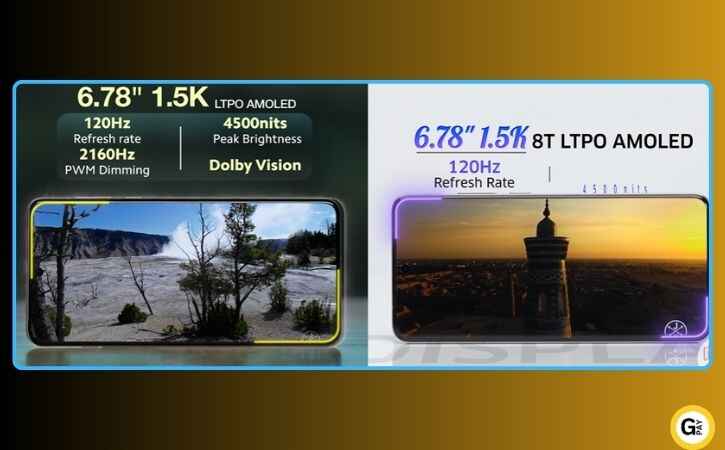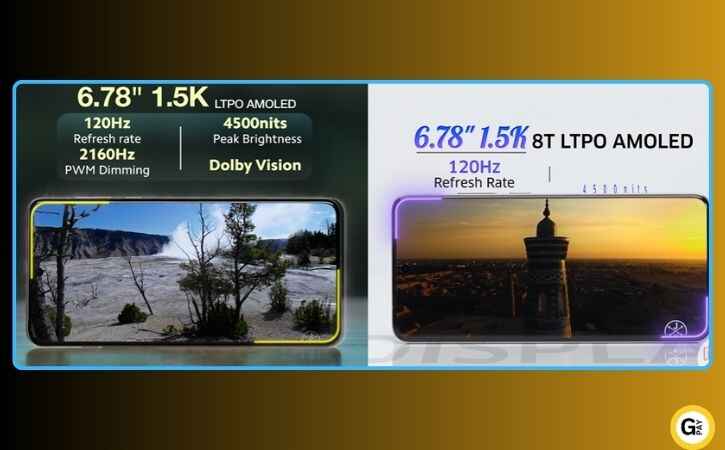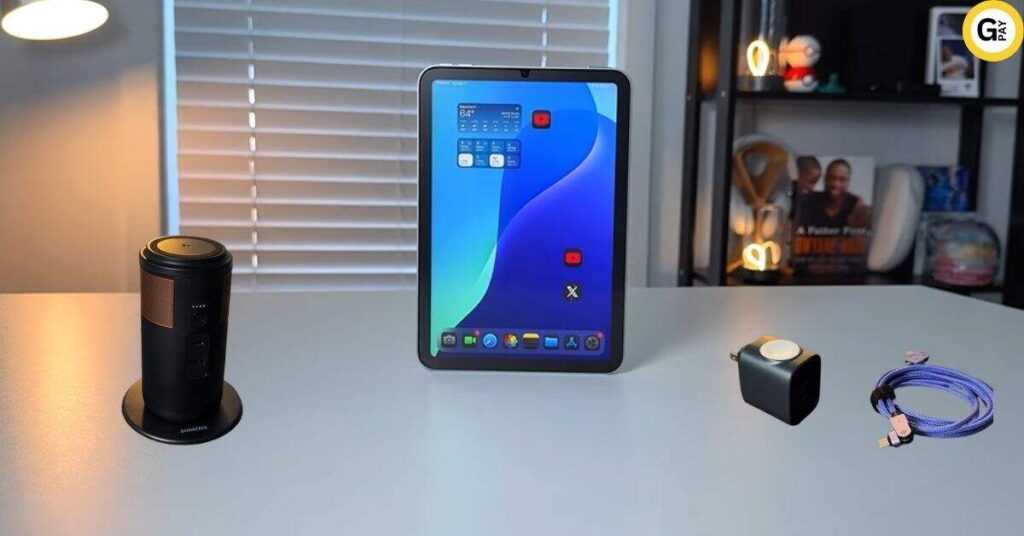Oppo Find X8 Pro vs. Vivo X200 Pro: You know what? There’s always a war when a new Vivo X Series phone comes into the office. Why? Because of the cameras, of course. The X Series phones have excellent cameras, and they’re very impressive.
But this year, things are slightly different, primarily because the Vivo X200 Pro, while it has launched, is going up against a formidable opponent: the Oppo Find X8 Pro. This is a competition I was looking forward to because they’re very similar in terms of the features they offer, the specs they have, the kind of experience you can get, and even the price.
So, let’s get right down to it—the battle of the Android Flagship Pros. Watch it till the end because I’m sure you’ll have a clear answer to your question: which one of these phones should you buy?
Here is the full comparison of Oppo Find X8 Pro vs. Vivo X200 Pro
Design: Oppo Find X8 Pro vs. Vivo X200 Pro.


The X200 Pro looks and feels premium, and I like it. Now, if you feel like you’ve seen this somewhere before, that’s because the circular camera module is very popular with BBK. You’ve seen it on the X00 Pro, the X00 Ultra, the X200 Pro, the OnePlus 13, and the Find X8 Pro as well. However, the circular camera module actually varies in size and position.
The one that Vivo has is a chunky design, taking up a large portion of the rear. When you place it on a table, it feels like some mobile stand is elevating it. On the other hand, if you place the Find X8 Pro right next to it, it’s flatter. Since it’s symmetrically aligned, there’s no table wobble; it sits firmly, so that’s not a problem.
Compared to the X200 Pro, the Find X8 Pro’s camera module is slimmer. When you place them side by side, you’ll notice that the Find X8 Pro also appears slimmer overall. But honestly, in terms of slimness, both are very similar. Most importantly, what improves the in-hand ergonomics of the X8 Pro is the fact that this phone is lighter than the X200 Pro.
Because of the way both of these are designed, I expected the X200 Pro to be slightly more top-heavy compared to the Find X8 Pro. Interestingly, the Find X8 Pro is top-heavy and tends to topple compared to the X200 Pro. The weight distribution has been done well on Vivo compared to Oppo.
For durability, Oppo uses the mid-range Gorilla Glass 7i for protection on the front and rear, whereas Vivo uses Armor Glass, which is its very own solution. The sides, of course, are made of aluminum on both phones.
Both phones also have some similarities. For example, you get an infrared blaster on both, as well as USB Type-C Gen 3.2 support. Additionally, both come with IP68 and IP69 ratings. A lot of people wonder why we mention IP68 and IP69 separately—they’re not a subset of each other. The IP69 rating is slightly different from the IP68 rating. I’ll provide a handy guide to explain the differences in the description, so go check it out.
Now, that’s about the in-hand feel and ergonomics, but Oppo does have a couple of distinctive advantages in design. It features an alert slider and a camera button, both of which are genuinely useful in a pinch, especially on a camera phone like the Find X8 Pro. Having a dedicated camera button comes in handy. I would have expected something like that on the Vivo X200 Pro as well.
Overall, when you look at design utility, compactness, and the whole build, I think Oppo edges out Vivo slightly.
Display : Oppo Find X8 Pro vs. Vivo X200 Pro.

The display experience on both these phones is remarkably similar. I found it very difficult to tell the two apart. Both feature the same display specs: an AMOLED, 6.78-inch display with a 120 Hz LTPO panel, support for Dolby Vision, and a peak brightness of 4,500 nits when watching HDR content.
What truly stunned me about both displays was their color tuning. The professional color tuning results in an incredibly low Delta E, making them trustworthy for color-sensitive edits. When viewed side by side, the color accuracy is nearly identical. Given this similarity, I expected some differences in HDR tuning, but that’s not the case. The only noticeable distinction is that Vivo’s display offers slightly brighter specular highlights, though this is hardly discernible unless you compare the displays directly.
Outdoors, both displays perform equally well in terms of brightness. However, Vivo has a slight technical edge with 1,800 nits in HBM mode compared to Oppo’s 1,600 nits. Both phones also offer 2,160 Hz PWM dimming, which is excellent for those sensitive to low flicker due to high refresh rates. This is a notable improvement over Apple, Google, and Samsung, and they could learn a thing or two from these Chinese brands.
The X200 Pro has an additional advantage: its display can scale down to 0.1 Hz, compared to the 1 Hz minimum on most other smartphone displays. This feature, while seemingly minor, has significant implications that I’ll discuss shortly. Additionally, the X200 Pro features a proper ultrasonic in-display fingerprint scanner, which can even unlock with wet fingers. Feel free to make all the wet-finger jokes you want in the comments! On the other hand, the Oppo FEX 8 Pro uses an optical in-display fingerprint scanner. While it’s fast and reliable, the positioning is lower than ideal.
Another detail worth mentioning is the placement of the volume rocker and power button. On the FEX 8 Pro, these are positioned slightly higher than I’d prefer, whereas Vivo has nailed the placement. That said, the Oppo FEX 8 Pro has tighter haptic feedback with O-Haptics. I had expected the Vivo X200 Pro to offer the same level of haptic feedback as the IU 13, which was fantastic for its price point, but surprisingly, the IU 13 outshines it.
Oppo also supports the LHDC codec, which Vivo does not, though both phones support LDAC. However, when testing the stereo speaker setups side by side, Vivo’s speakers were louder and richer. You can listen for yourself and share your thoughts.
performance: Oppo Find X8 Pro vs. Vivo X200 Pro.

The performance of both these phones is notable. Vivo is definitely conservatively tuned compared to the Oppo Find X8 Pro. The Dimensity 9400 inside the Vivo actually scores lower than the Oppo in both AnTuTu and Geekbench tests. However, the CPU stability was better on the Vivo X200 Pro.
With the 3D Mark test, Vivo actually pushes for performance. If you’re playing a game like Genshin Impact, both phones perform very similarly, achieving an average FPS of about 59.9 on the Vivo and 59.7 on the Oppo. Impressively, neither phone exceeded 40°C during these tests, which is fantastic as both devices can run cool.
In my daily usage, I noticed that the Oppo Find X8 Pro and Vivo X200 Pro both remain relatively cool, with temperatures not going beyond 43–44°C. The pleasant weather here in Pune likely contributes to this, making it difficult to overheat the phones. Even in summer, I expect the temperatures to rise to 43–44°C before throttling begins.
You might be wondering why Vivo is so conservative in its tuning. Of course, its custom UI plays a role, but more importantly, Vivo takes a conservative approach to ensure optimal stability and thermal management.
Battery : Oppo Find X8 Pro vs. Vivo X200 Pro.

The battery life on these phones is mind-blowing. Do you know how I mentioned that the Oppo Find X8 Pro has fantastic battery life? Well, it truly does. I got 8.5 hours of screen-on time with moderate usage and 8 hours with heavy usage.
However, the Vivo X200 Pro performs even better. With heavy usage, I managed to get 8.5 hours of screen-on time, and with moderate usage, I achieved an impressive 9 hours and 30 minutes. For my usage, this is the best battery life.
Remember how I said that the 1Hz refresh rate is very important? It brings another advantage: battery life improvements. This feature offers such quality-of-life upgrades in tech that I genuinely enjoy it. So, good job, Vivo!
Now, talking about charging speeds, the Oppo supports 80W wired charging and wireless charging, while the Vivo supports a whopping 190W wired charging. The Vivo takes about 45 minutes for a full charge (46 minutes to be precise), whereas the Oppo takes exactly 1 hour. However, Oppo has an edge in wireless charging speeds, offering 50W compared to Vivo’s 30W. For both, you’ll need to buy the compatible wireless chargers separately.
Both phones are designed for the global market, ensuring top-notch 5G performance. There’s absolutely nothing to complain about in this regard. Call quality is incredible on both phones, with no issues to report. Additionally, you get support for Wi-Fi 7, Bluetooth 5.4, NFC, and everything else you’d expect from flagship devices.
Software: Oppo Find X8 Pro vs. Vivo X200 Pro.




Let’s be real about the software experience on both these phones. While Funtouch OS 5 has improved by leaps and bounds, it’s still no match for ColorOS 15, in my opinion.
Before I explain why, another advantage of ColorOS—or at least the Oppo Find X8 Pro—is that Oppo promises 5 years of major updates and 6 years of security updates, compared to Vivo’s 4 years of major updates and 5 years of security updates for the X200 Pro. While 4+5 is still good, 5+6 is undeniably better.
Now, onto the reasons why I think ColorOS 15 is superior. First and foremost, it has smoother and faster animations. It’s arguably the best animation tuning we’ve seen on any software this year. Additionally, there’s a strong sense of design coherence throughout the system. For example, take the Quick Settings panel—compared to Funtouch OS 5, ColorOS 15 is definitely more modern and visually appealing.
There are also small but impactful details. For instance, Funtouch OS 5 doesn’t let you customize icon packs, while ColorOS 15 does. Moreover, ColorOS 15 brings a host of AI features. Both systems include advanced photo editing tools, such as object erasure, and they work exceptionally well. However, ColorOS 15 goes further by including additional features, such as writing tools, which Funtouch OS 5 lacks.
That’s not all—ColorOS 15 also incorporates iPhone-style Live Activities, something Funtouch OS does not offer. Overall, ColorOS 15 feels fresher and more feature-packed compared to Funtouch OS 5.
Camera : Oppo Find X8 Pro vs. Vivo X200 Pro.

I know I’ve made you wait a long time to talk about the cameras, so let’s dive in.
Starting with the Vivo X200 Pro, some people were disappointed that it lacks the 1-inch sensor found in the X100 Pro. Instead, it features the Sony Lytia 818, a 1/1.28-inch stacked CMOS sensor, which is still excellent. Vivo compensates for this by bringing over the periscope camera from the X200 Ultra. This uses a Samsung HP9 1/1.4-inch sensor with a 200 MP resolution, and trust me—it delivers fantastic results.
Primary Camera
The X200 Pro’s primary sensor captures more detail and sharpness compared to the Oppo Find X8 Pro. Zooming in (even at 100%) clearly reveals the difference. Both phones offer excellent HDR tuning, but Vivo’s on-sensor HDR stands out. It handles specular highlights better, especially when shooting people against backlighting, avoiding the tone-mapping issues present in the Find X8 Pro.
Vivo also offers three color modes: Vivid (default), Z-Natural, and Textured. For most of my shots, I used Z-Natural. Comparing Z-Natural to Oppo’s regular mode, Vivo captured reds and oranges more accurately. Vivo’s Vivid mode closely matches Oppo’s regular color capture, and both phones maintain good color consistency across sensors, although slight shifts occasionally occur.
Portrait Photography
When it comes to portraits, Vivo outshines Oppo in skin tone accuracy, detail, and edge detection, whether shooting at 23 mm, 50 mm, 85 mm, or 135 mm. Vivo’s 85 mm HD portrait mode provides even greater detail. Additionally, Vivo’s Zeiss simulations elevate the portrait experience.
Low-Light Performance
In low-light shots, Vivo captures more detail, especially in shadow areas, and pulls in more light overall. However, Vivo’s night mode has been moved to the Landscape mode, which is confusing and could use a more intuitive layout.
Ultrawide Camera
Both phones have excellent ultrawide cameras with 50 MP sensors. Oppo’s ultrawide offers a slightly wider field of view, but Vivo’s night processing pulls in more detail, giving it a slight edge.
Selfies
Vivo’s selfie camera is good, but Oppo performs slightly better in skin tone accuracy. Detail retention is similar on both phones for selfie portraits and HDR shots. In low light, Vivo’s AI Extreme Night Mode overly processes faces, resulting in artificial-looking images. Without night mode, Vivo’s selfies look more natural but are less bright compared to Oppo’s. I’d personally pick Vivo’s selfies for their natural details.
Zoom
Here’s where things get interesting. Vivo excels at 2x zoom with sharper and more detailed shots. At 3x, Oppo performs better as Vivo uses the primary sensor to crop, resulting in blurry images. At 3.7x, 6x, and up to 10x, Vivo takes the lead due to its larger sensor, offering sharper and more detailed results. Beyond 20x zoom, Oppo relies on AI to enhance details, making its images look sharper but less natural compared to Vivo.
In low-light zoom, Vivo outperforms Oppo at all levels except 3x.
Video Recording
Both phones can record 4K 60 FPS video, but Vivo has better stabilization, higher bitrate, and superior sound recording, giving it an edge. This applies to the primary, ultrawide, and selfie cameras. Vivo also excels at zoom video, delivering sharper details at long ranges.
Low-light video quality is another win for Vivo, and it offers 4K cinematic portrait videos at 30 FPS, which Oppo can only achieve at 1080p 30 FPS. Additionally, Vivo supports 10-bit log video with the same file format as Sony Alpha cameras, making it ideal for professionals using a Sony Alpha workflow.
Conclusion
When it comes to smartphones, Vivo stands out as a company that continues to push the industry forward—not just with technological advancements, but also with unique innovations like the 0.1Hz display. The Vivo X200 Pro is a testament to that innovation, and I absolutely love it. The experience of using this phone has been fantastic, and I can wholeheartedly recommend it to anyone seeking an exceptional camera experience.
However, if you’re okay with a good (but not class-leading) camera and value a superior software experience, the Oppo Find X8 Pro might be the better choice for you. Both phones have their unique strengths, and choosing one as a clear winner would be unfair to the other.
That said, if I were forced to pick one, I’d go with the Vivo X200 Pro and use it as my primary phone.













